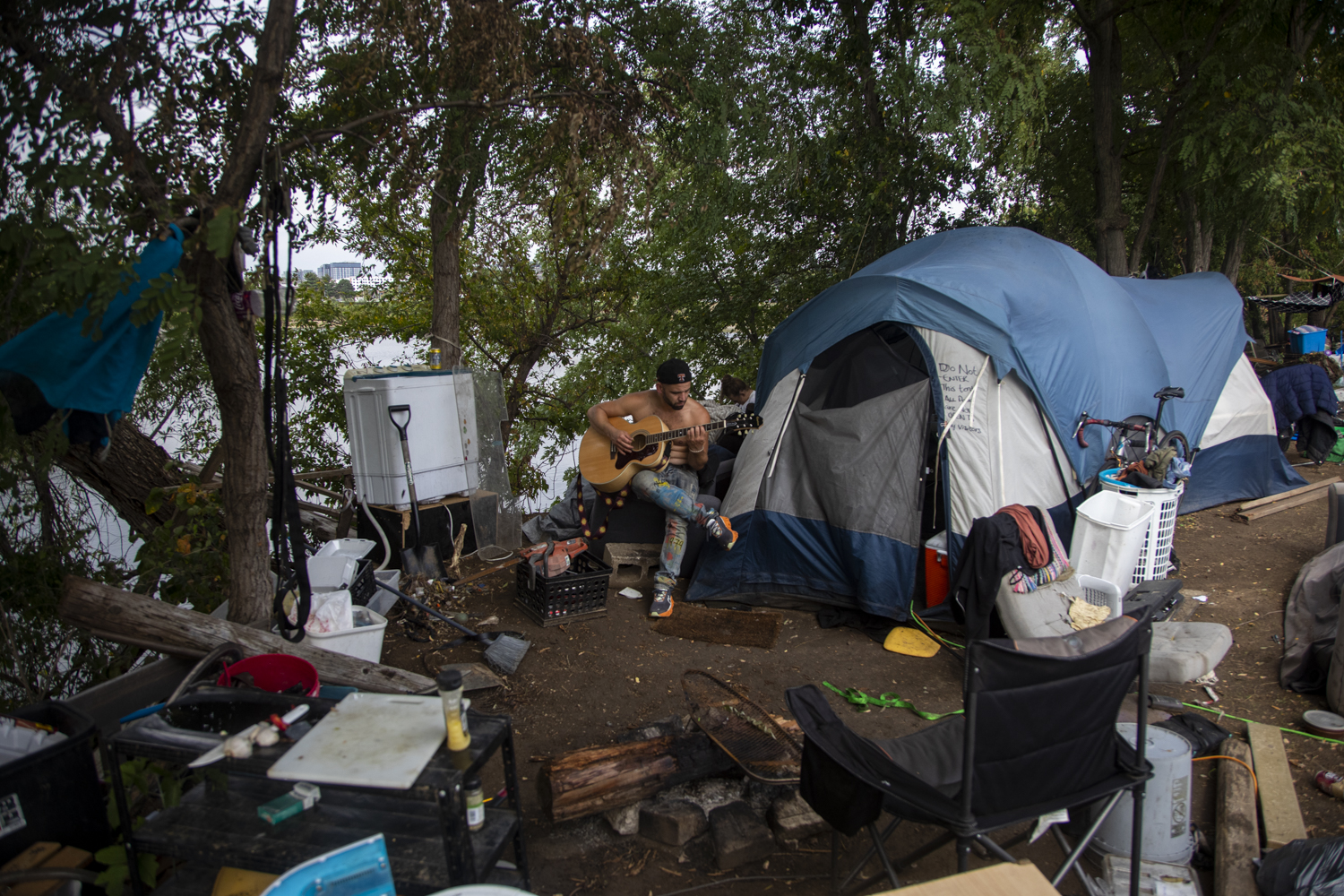Editor’s note: Jordan Barry is a Daily Iowan photojournalist from the Iowa City area and a University of Iowa student double majoring in anthropology and journalism and mass communications. Barry spent five months following a community of local individuals experiencing homelessness and documented their stories. The piece is written in a first-person perspective to provide a more intimate understanding of the individuals who were followed.
For the safety of the individuals discussed, The Daily Iowan has agreed to the sources’ request to only be referred to by their first names.
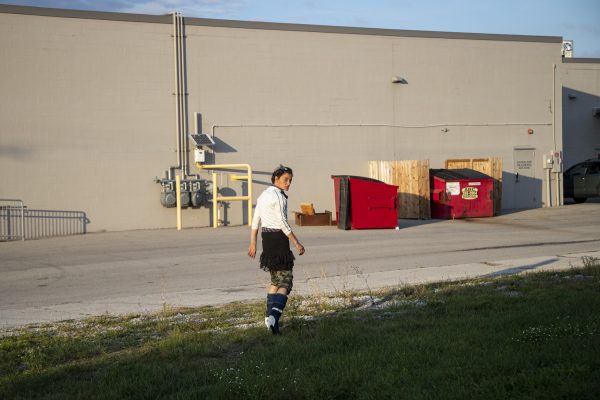
Just south of Highway 6 near South Gilbert Street in Iowa City, along a wooded embankment abutting the Iowa River, a makeshift community for local unhoused individuals burst into flames in early October, bringing with it the attention of city law enforcement and media.
The property — dubbed “Tent City” or “River Camp” by some of those who lived there — is owned by the Iowa City Municipal Airport Commission who have since evicted over a dozen people residing on the land. Airport officials are working with Shelter House to provide resources for the individuals displaced by the fire.
I visited the camp for about a month and a half before the fire, during which time I became acquainted with a number of the individuals living there. I was hesitant to photograph my first day at the encampment as I could sense the collective uneasiness surrounding my being there. But as weeks passed to months, the tension of my presence seemed to soften. Individuals opened up to me about their lives and in doing so opened up a part of Iowa City that I had never known. I encountered new perspectives during the project while talking and spending time with people who are unhoused, which I found to be extremely rewarding. I was motivated by the resilience of Iowa City’s most marginalized residents, proof that hope persists in some of the darkest places.
On the day of the fire, I was one of the first journalists at the camp. Having been there multiple times before, I was concerned for the well-being of the people who considered this small stretch of land their home. I’m not suggesting other journalists were not equally troubled, but I was struck by those in my profession who appeared to only focus on the problem of a fire caused by the carelessness of people experiencing homelessness.
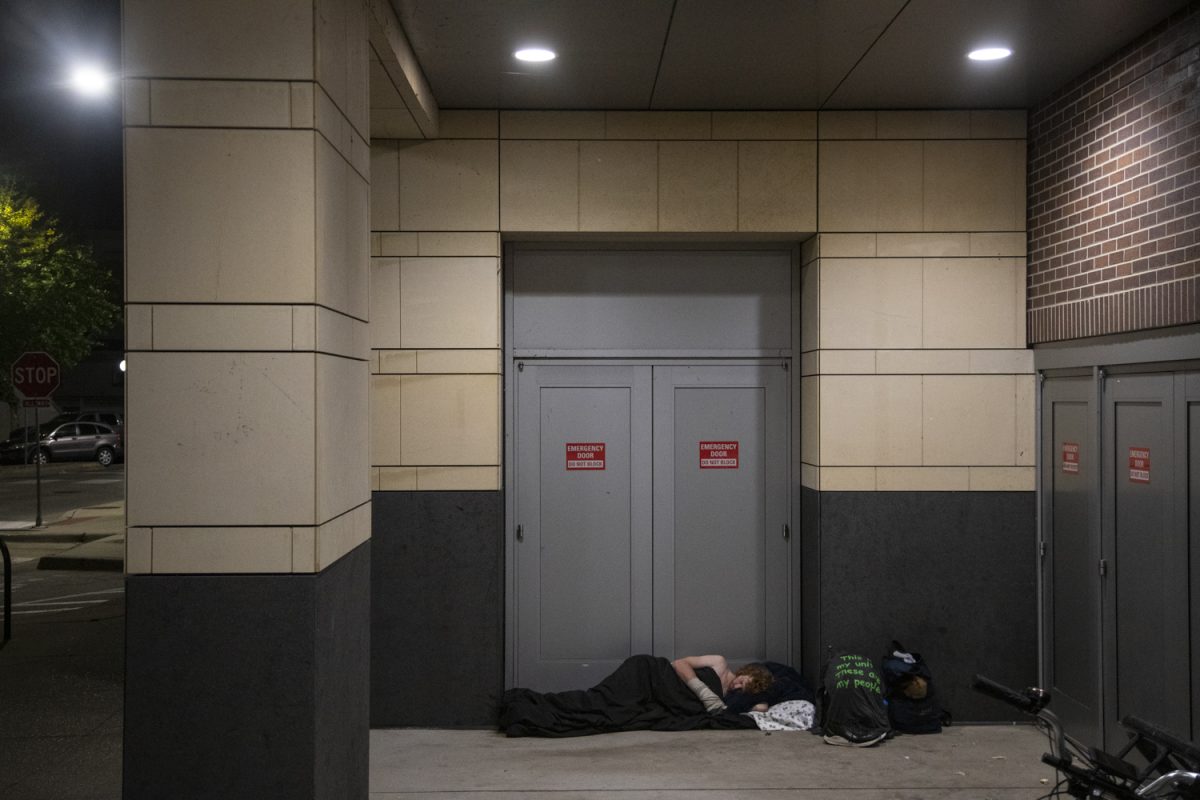
From the beginning, I wanted to be a different kind of journalist. I wanted to build relationships with people and help tell honest and holistic stories. Before I started the project, I didn’t personally know a single homeless person. That changed in the five months I spent covering this story. For one thing, I met a young man who said he had attended Iowa City High School. Meeting him was certainly a profound moment for me. Our common backgrounds in the Iowa City area struck an emotional chord, and amplified my sense of commitment to cover this group fairly and without bias. Today I feel fortunate to have a different perspective on Iowa City and its people. Through this experience, I have found myself more empathetic towards those facing extreme challenges, which in this case are often out of their control. The diversity of stories I heard was both captivating and extremely personal.
During my time working on this piece, I came to know several individuals, including Kilo, Ashley, and Stykx. I didn’t know where to start contacting people initially, but after talking to a woman named Liz and a man named John, both of whom were sleeping on the sidewalk on a corner near the restaurant Uncle Sun, they told me to look along the Iowa River near Highway 6 and the Benton Street Bridge. I had biked along the Iowa City River Trail multiple times, which goes through that area, but I never explored it on foot. One day in September, I hopped on my bicycle and headed in that direction. The following stories concern some of those I came to know best.
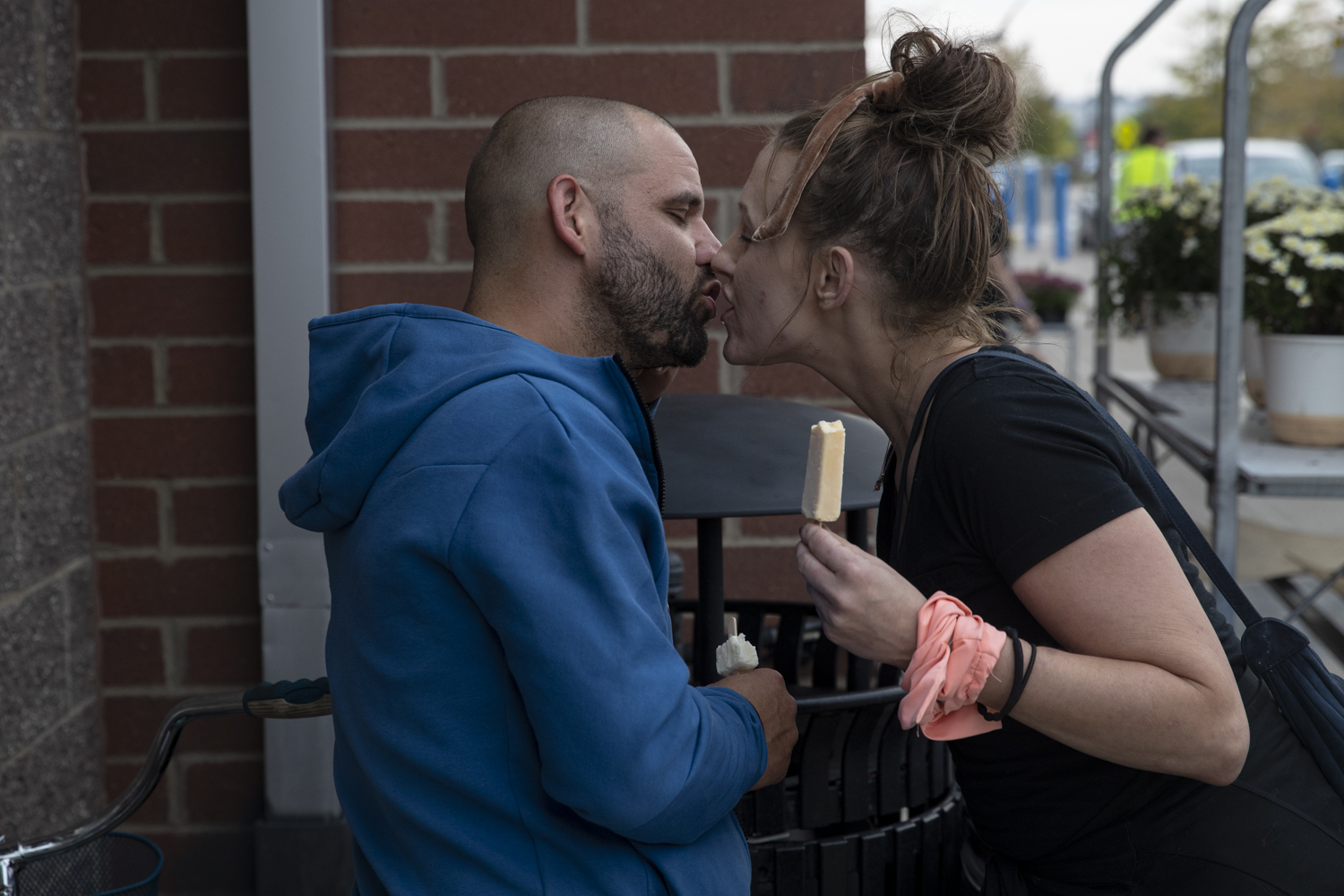
KILO AND ASHLEY
Kilo and Ashley are a couple who are both in their 30s. I remember their hesitancy in speaking with me when I initially met them, but they opened up after learning I intended to simply understand their daily life. They met late last summer and started to live together in “Tent City,” but when I first met them they were in the process of moving to a different camp.
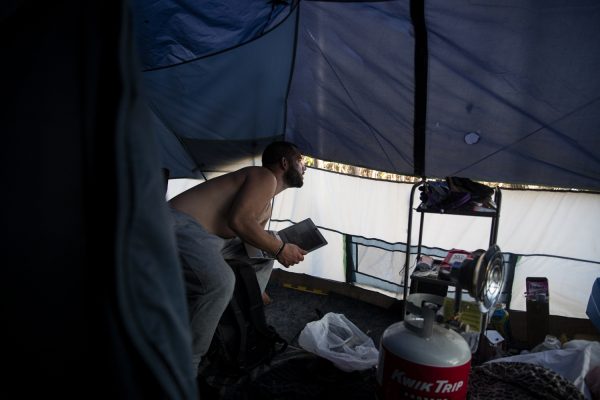
Later that day, I followed them to the Iowa City Walmart. Bags of cans jangled precariously in hand as Sam, Kilo, and Ashley biked through car lots and car dealerships along Highway 6. I spent some time with Sam at Walmart as she turned in cans and bottles for nickels, dimes, and quarters. She told me about her life growing up poor in Nebraska. Sam’s hands were dirty, her fingers calloused and nails long.
Cars sped past Highway 6 in dangerous proximity as the trio pedaled past the Iowa City Municipal Airport and then crossed the river. They made their way along the east side of the river before emerging out of the trees onto “Tent City” — the sprawling encampment of over a dozen or so individuals all living in intricately designed or personally modified shelters. Clothes, bike parts, and a host of other collected items were strewn across the grass and bridged the gap between tents. Ashley offered melting popsicles she had bought at Walmart to people as they emerged from their tents. The community was tight-knit, but I quickly learned communal sharing was defined differently by individuals, and sometimes disputes would erupt into altercations. Kilo and Ashley informed me they planned one day soon to move upriver, away from “Tent City”. They said addiction, trauma, and mental health problems often create a landscape of social volatility in the encampment, which made them feel uncomfortable.
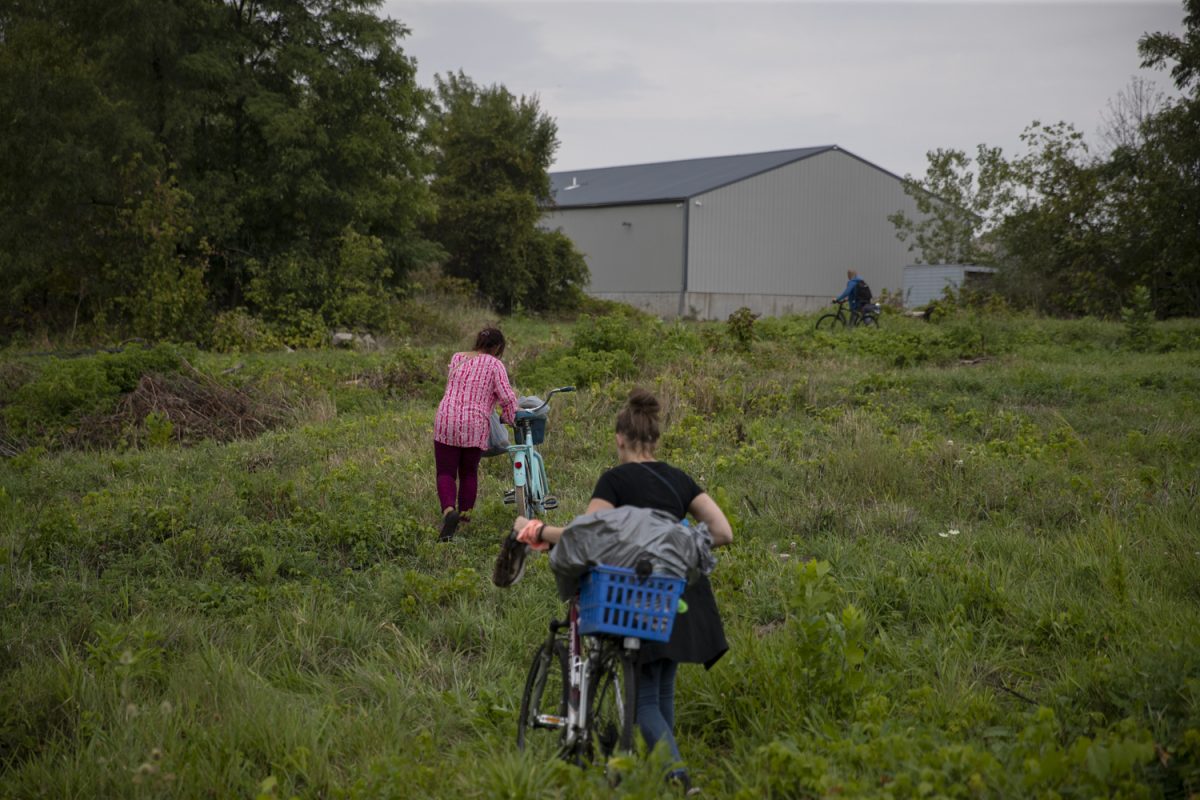
As a slight breeze ushered the warm day into a cool evening, I noticed a pair of joggers on the trail abutting the camp stop and look. There were trees along the encampment, but not enough to hide the various tents from prying eyes. It seemed the separation between the trail and encampment was not just physical but also an invisible disconnect between the housed and unhoused of Iowa City.
As I returned to visit Kilo and Ashley over the following weeks and months, they became increasingly more open with me. I could see their relationship was strong but also observed that it was undoubtedly intertwined with the realities of addiction. They explained that despite their drug dependence, it was a comfort to have each other rather than be alone.
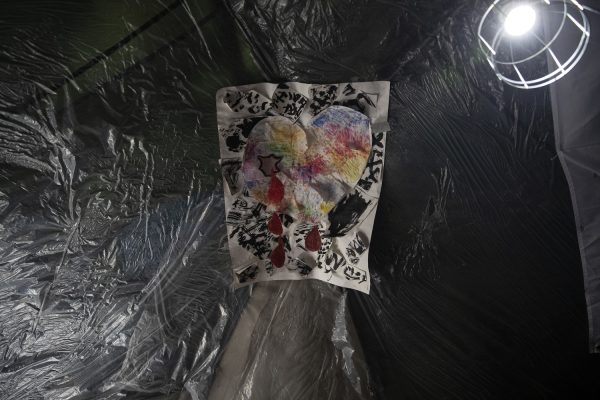
When I asked what they would want people to know about them, Kilo said, “I would want people to know that I’m sorry. And I really don’t care about how people look at me but I care about my family and if there is something that I would want people to know what’s going on here, it’s that I am a sorry person … A humbled sorry person that’s hurt. A lot of people who use meth and are hurt will come out in anger real quick. But if people really knew like in the inside of me, we are f***ing hurt — like, we are damaged. And if they knew how deep of a pit of a dark hole that we found ourselves in, I feel like they would feel sorry, too, and not just write it off as just a junkie or a liar, cheater, thief — whatever, like a lot of us are just hurting. The drug makes us feel better.”
This fall, Kilo and Ashley’s camp moved three times, and I would often find they moved to a new spot when going to see them. Their camp was in a state of continuous precarity moving up and down the banks of the Iowa River. Snow now covered the ground one December afternoon as I visited their camp. Bald eagles watched from their perch on a tree branch above as I entered the assemblage of tent and tarp, which measured roughly ten square feet of livable space. Christmas lights, powered by a generator, illuminated an entranceway where salvaged artwork was posted to the inside walls. Below the artwork, nonperishable food items were stacked neatly next to a small electric toaster. A propane tank equipped with a heater stood next to the bed. A large poster of the Hindu God Vishnu hung on the side of the tent as well as a poster of a tweet from Kanye West that read, “How to NOT kill yourself pt. 1, Avoid being around people who want to kill yourself.”
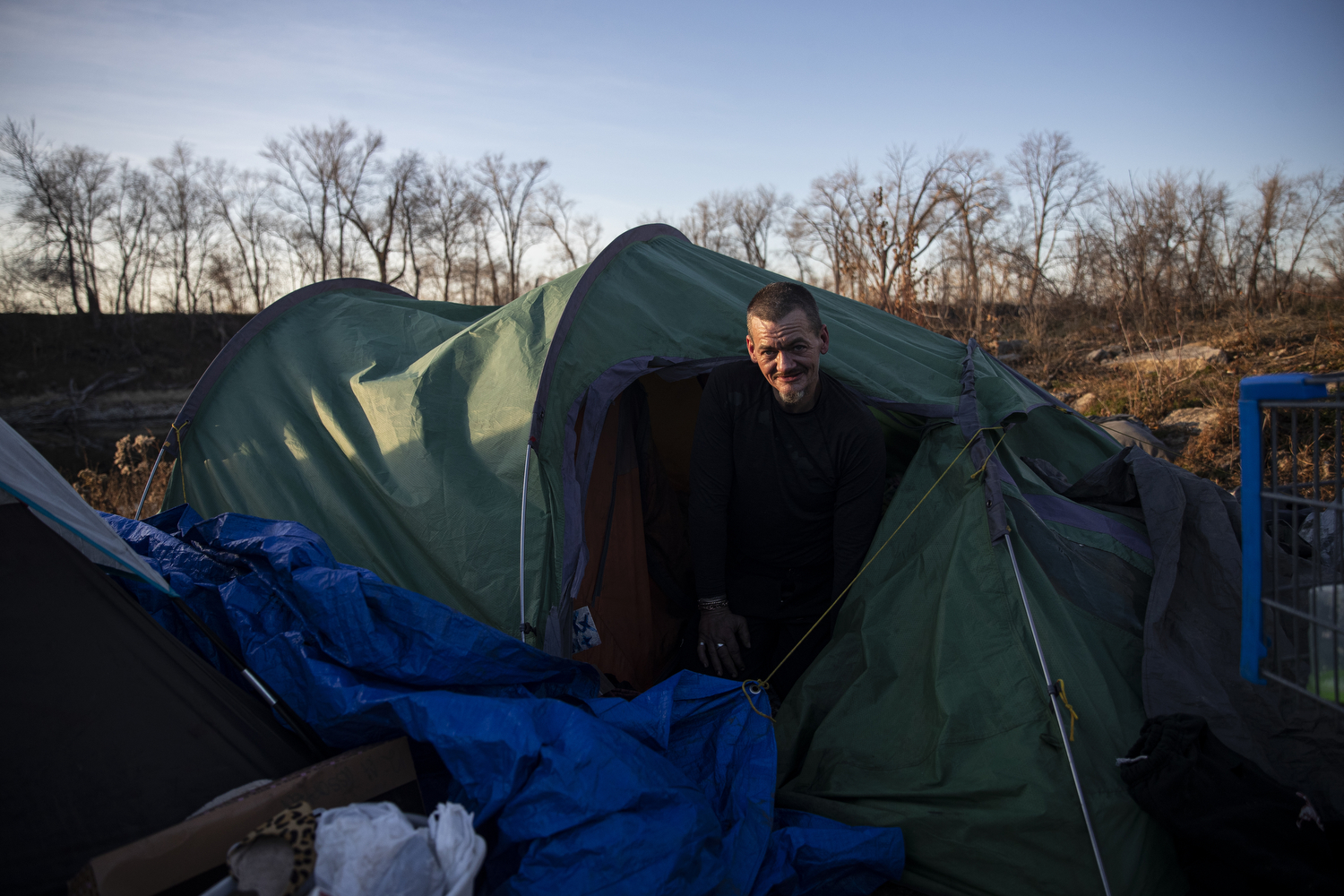
STYKX
When I met Stykx, 51, he was immediately open with me about his experiences; I can remember the moment clearly. The tall, statured man laid on his side on a blank mattress with half a cigarette dangling from his mouth. His hair, dyed purple, was fading back to brown. The midday light pierced through the trees, highlighting a motley selection of possessions: loose-leaf tobacco, a dark torn sweatshirt, a backpack, and a dirty syringe. Stykx told me about his life in Clinton, Iowa; how his daughter was taken by the DHS, and how battles with a subsequent heroin addiction almost took his life on multiple occasions. I saw the fatigue in his face, but in his eyes remained a sense of energetic youthfulness.
“I feel my eyes are open to other people, I see that a lot of people’s eyes are closed and I get it from people who have homes … I get looking at homeless people … even acknowledging us is a difficult thing for them — it’s frightening,” Stykx said. “They don’t wanna see it as a possible for themselves, so it’s easier for them not to acknowledge, not to see.”
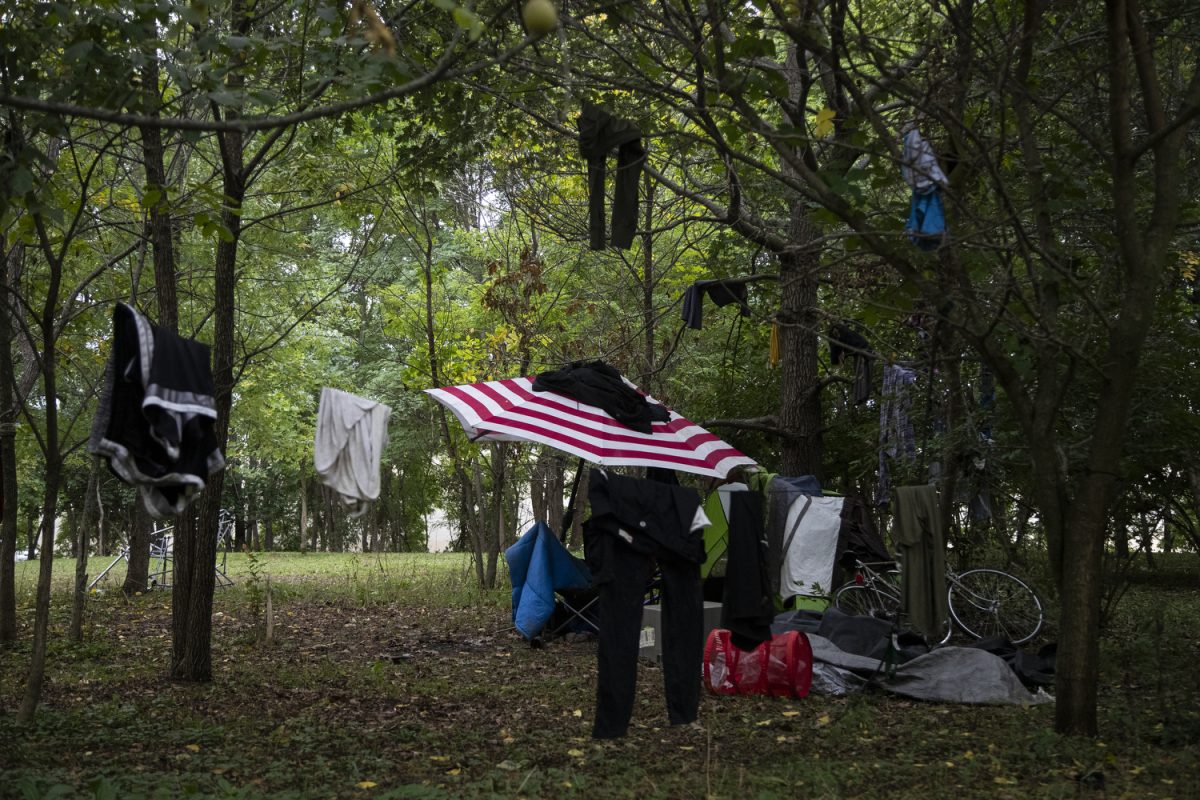
Stykx changed camps often. Weeks went by when I would not see him. I once found him living behind the Hy-Vee on 1st Avenue in a wooded area. He was under the cover of a large red and white striped beach umbrella. Stykx walked with a noticeable limp; he told me how a bar bouncer had broken his femur several years ago in Clinton, and due to not being able to afford a hip replacement, his left leg was shorter than his right. But Stykx chose to remain positive. He claimed that his disability made him faster while riding his bicycle — which from my observations sure seemed like it might. With astonishing elegance and pace, he zigzagged through streets and empty car lots atop his modified Peugeot road bike.
It was late in the day at Stykx’s current camp as he lay cocooned in a hammock, his head tilted toward the sky. He held an arm out and let it sway below him. His forearm displayed a fading tattoo of a yin-yang design a friend had drawn for him. Further down, rusted bracelets and rings appeared to constrict the blood flow to his multicolored painted fingernails. When I asked him about whether he would consider moving into a shelter he shook his head with a smile.
“I like playing Peter Pan,” he said. “I could be a pirate for a long time.”
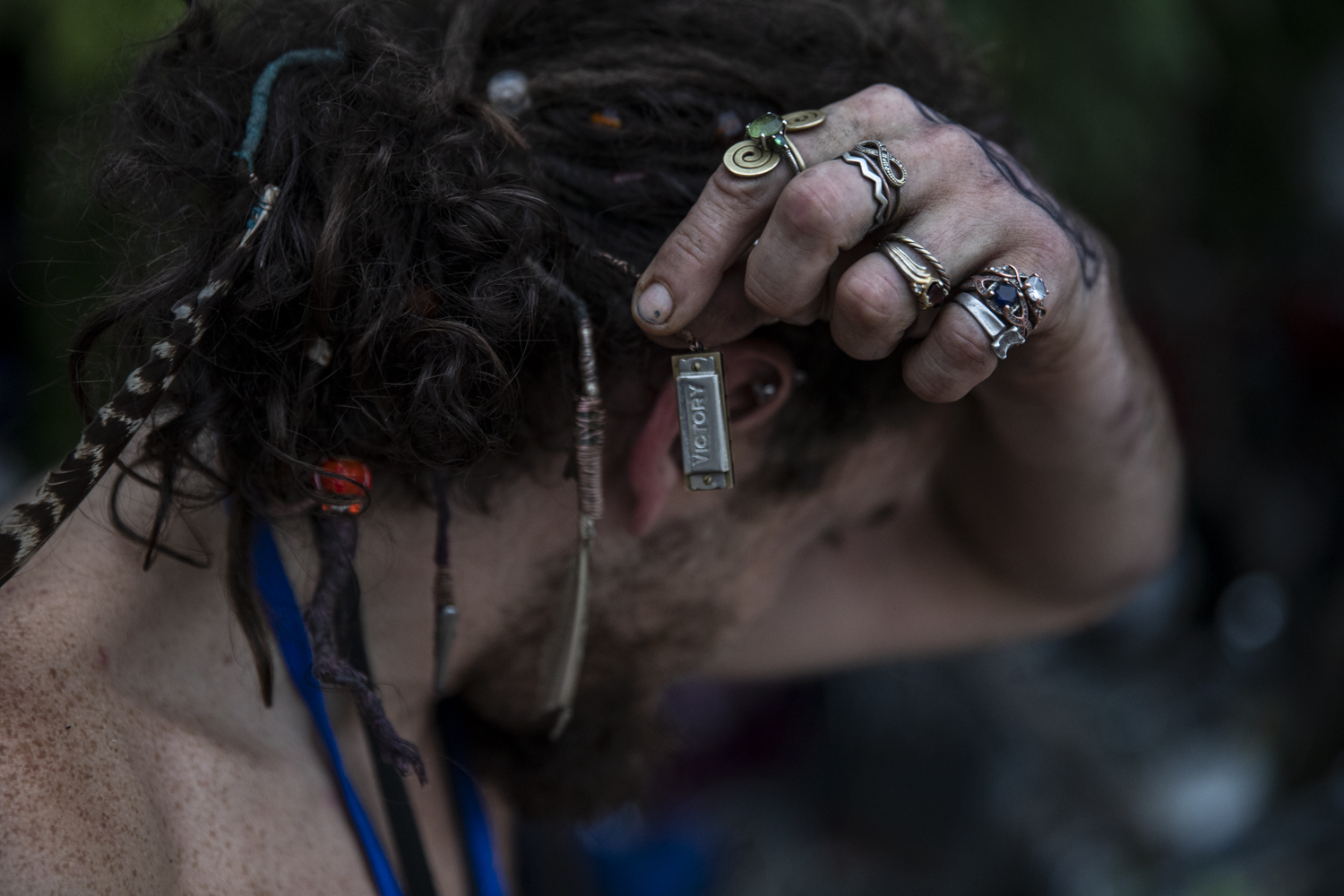
LOOKING TO THE FUTURE
The last time I saw Kilo and Ashley was on Jan. 25 in their tent. It was raining and the snow was beginning to turn into slush and salt. During the sub-zero temperatures in Iowa City, they were fortunate enough to stay at a friend’s house instead of going to the winter shelter like many others. Kilo and Ashley return to their camp periodically when the weather permits.
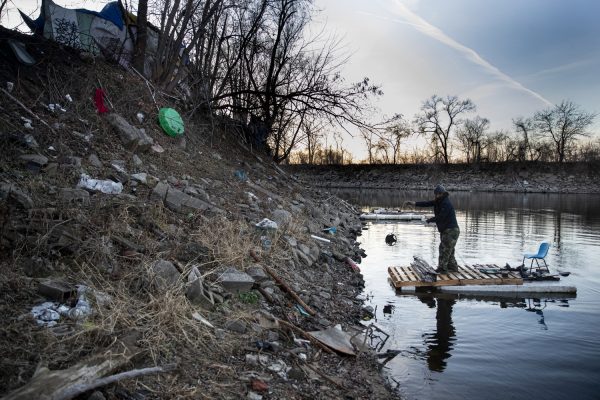
However, at that moment, their faces — illuminated purple from lights powered by the recently restarted outside generator — shone brightly in the surrounding damp. We were happy to see each other. They acknowledged their future remains uncertain.
I met up with Stykx again at Shelter House by coincidence on the same day. Stykx looked to be in good spirits despite the dismal weather and seemed optimistic about his current living situation. He admitted that during the past winter storms this month he had moved into Iowa City’s winter shelter for a week or so, but had since moved out.
As I learned during a call with Christine Hayes, director of development at Shelter House, over a dozen individuals were displaced by an eviction at the encampment. Most have housing case managers but still have been unsuccessful in finding housing in the private marketplace.
When I returned to the airport’s land where the encampment used to be last week, I found it almost unrecognizable. Snow drifted into large embankments from the wind now free from the barriers of trees. The emptiness sat with me, and I stopped to reflect on the experiences I had during the project.

I recalled a quote from Stykx; “I love my life, even the hard days are a blessing too … and it’s not the meth thing, it’s the life thing, we’re living each moment, each minute, having our adventures and our good and bad times. I think the good times we are experiencing more deeply because the hard times, because of freezing out here, because of the moments when we are just miserable, when we have a good moment it’s just f***ing amazing,” he chuckled to himself. “You know I’ve got this girl … and I’m head over heels for her and I’m willing to just love her and be open with her and not hide from it the way I would’ve in the past. There is a lot of joy to be had when you got a lot of misery.”


